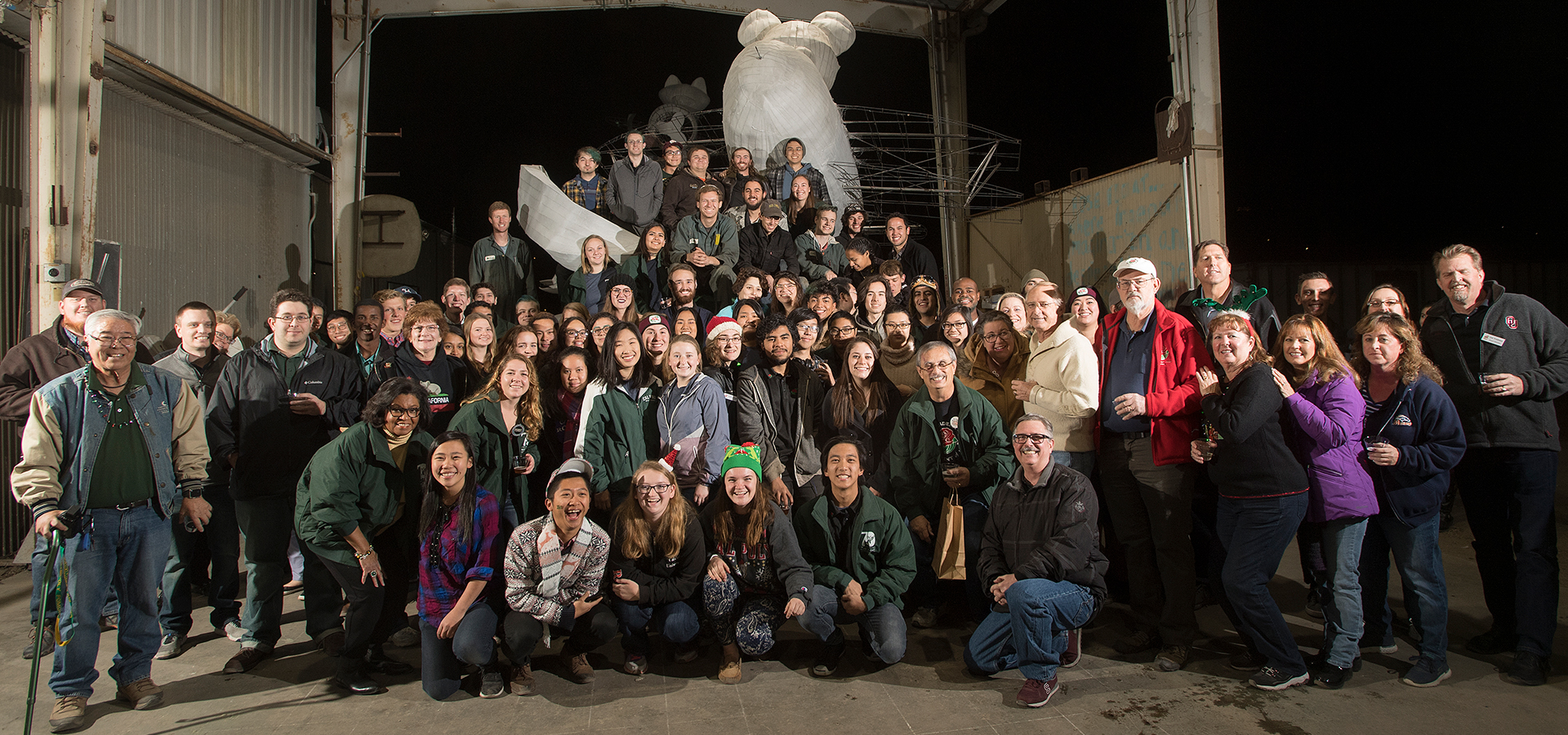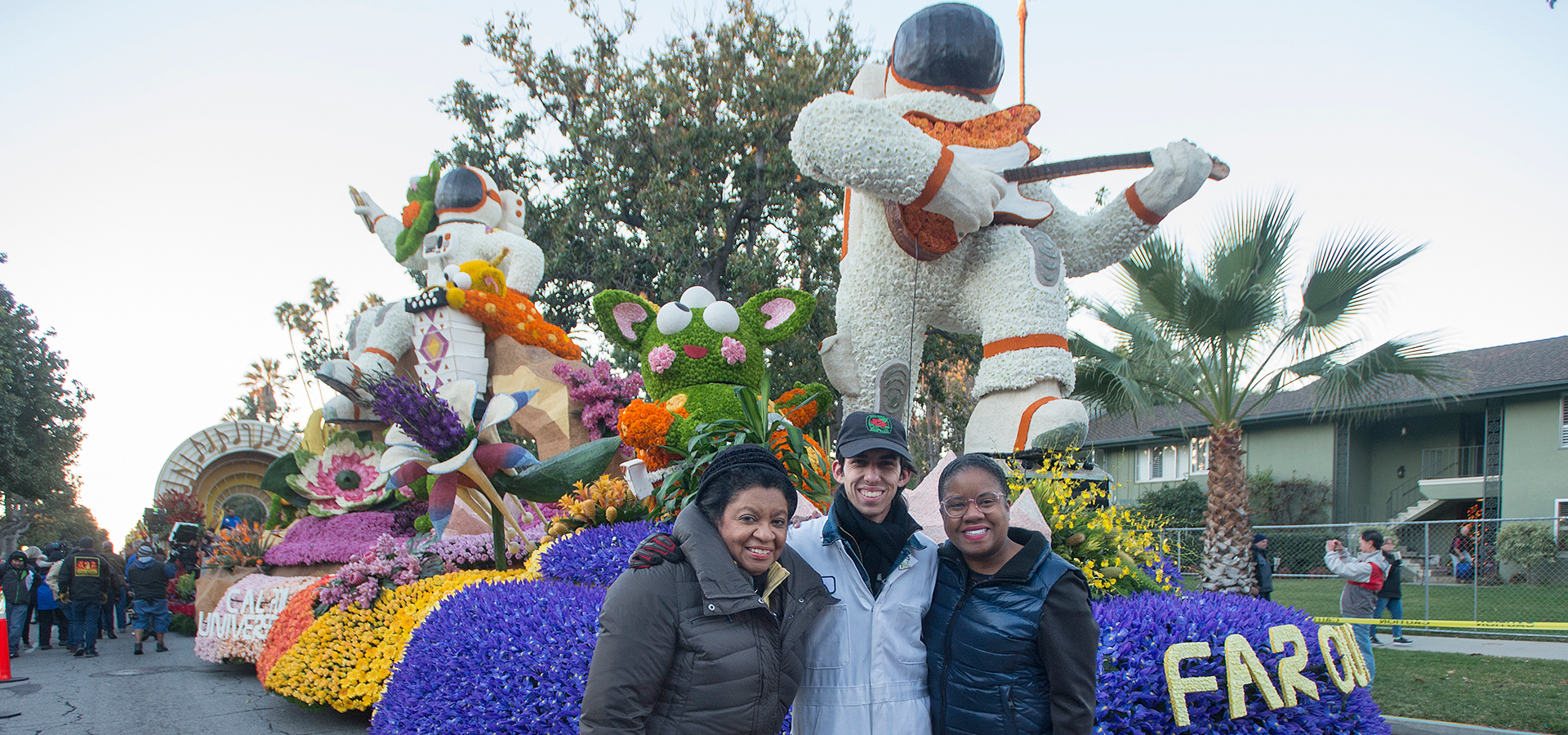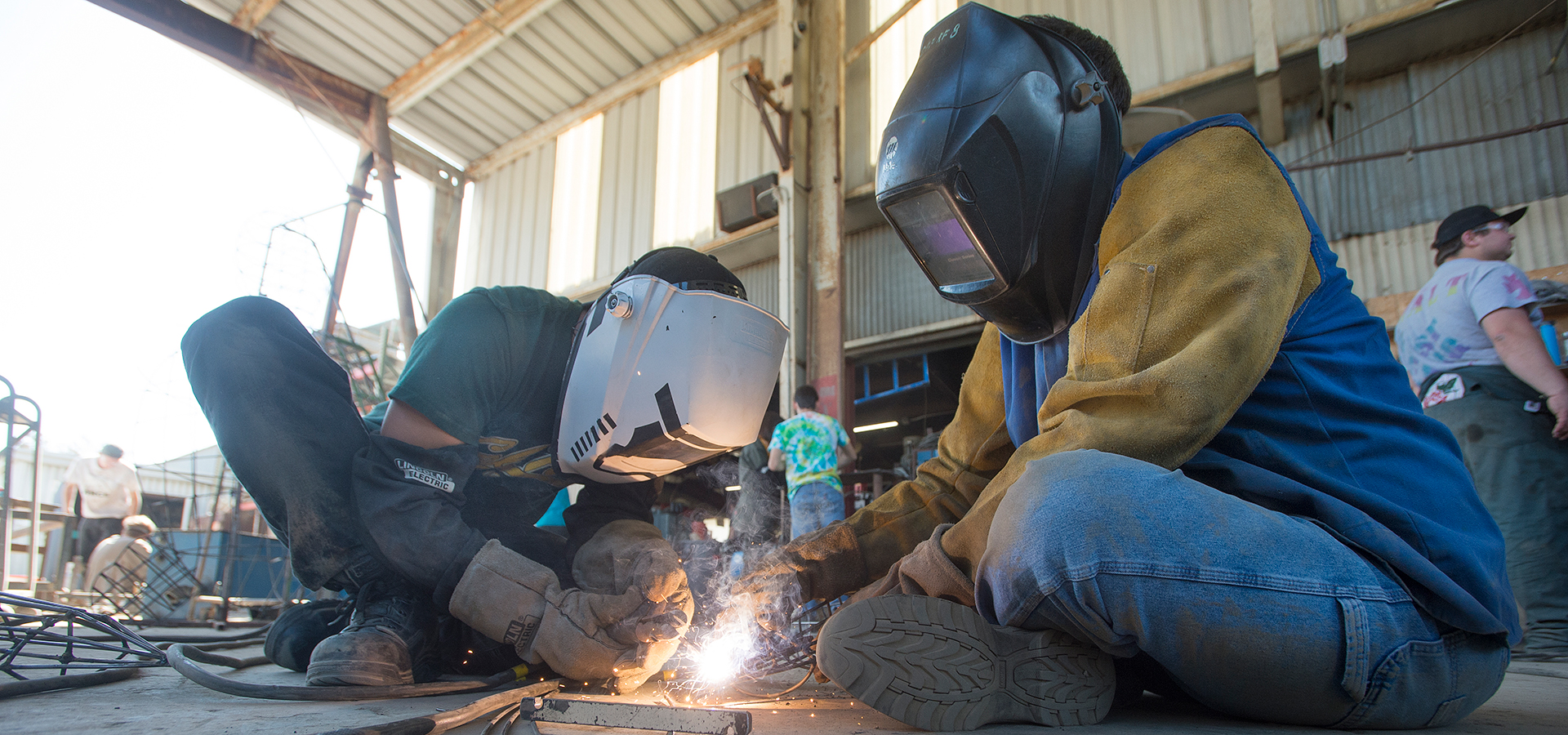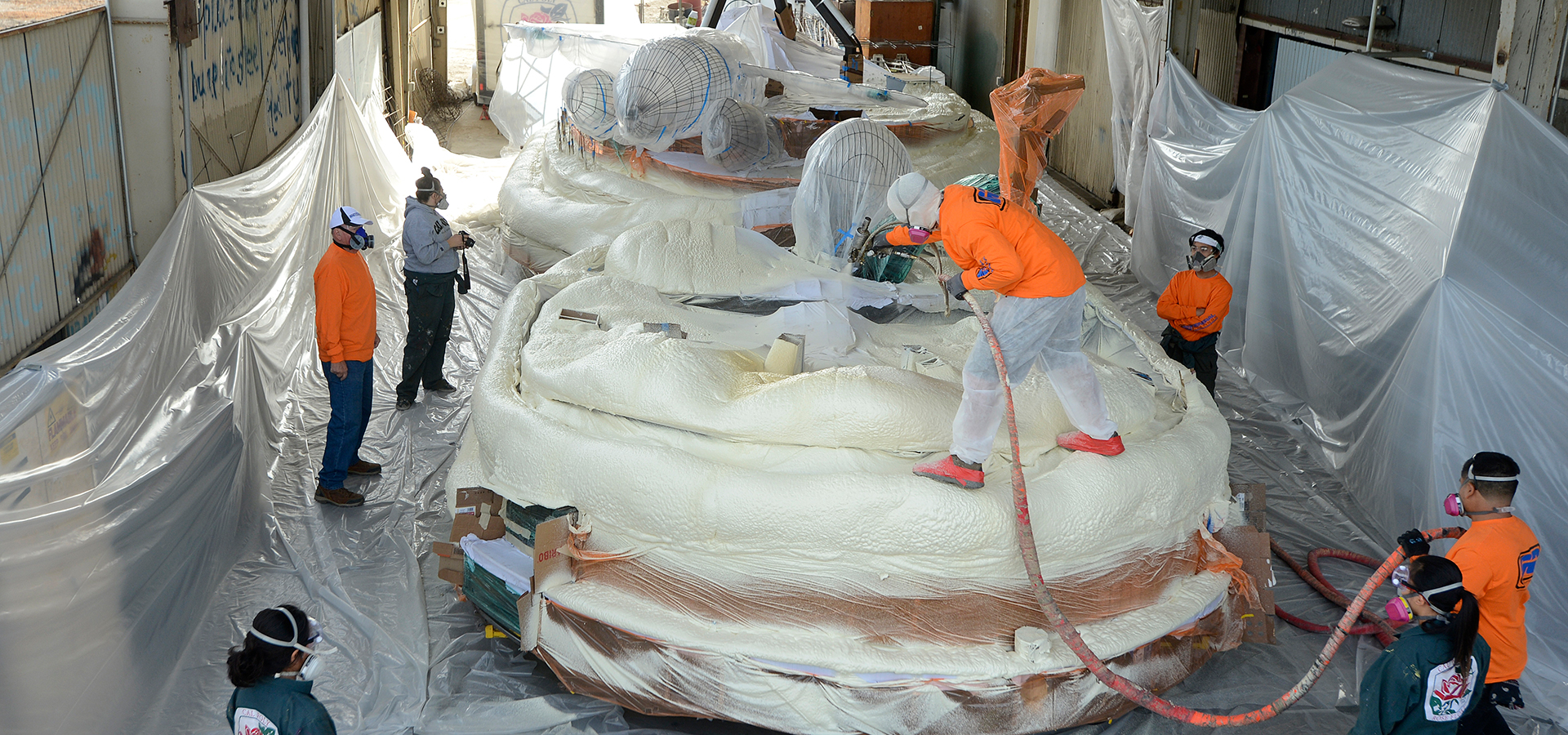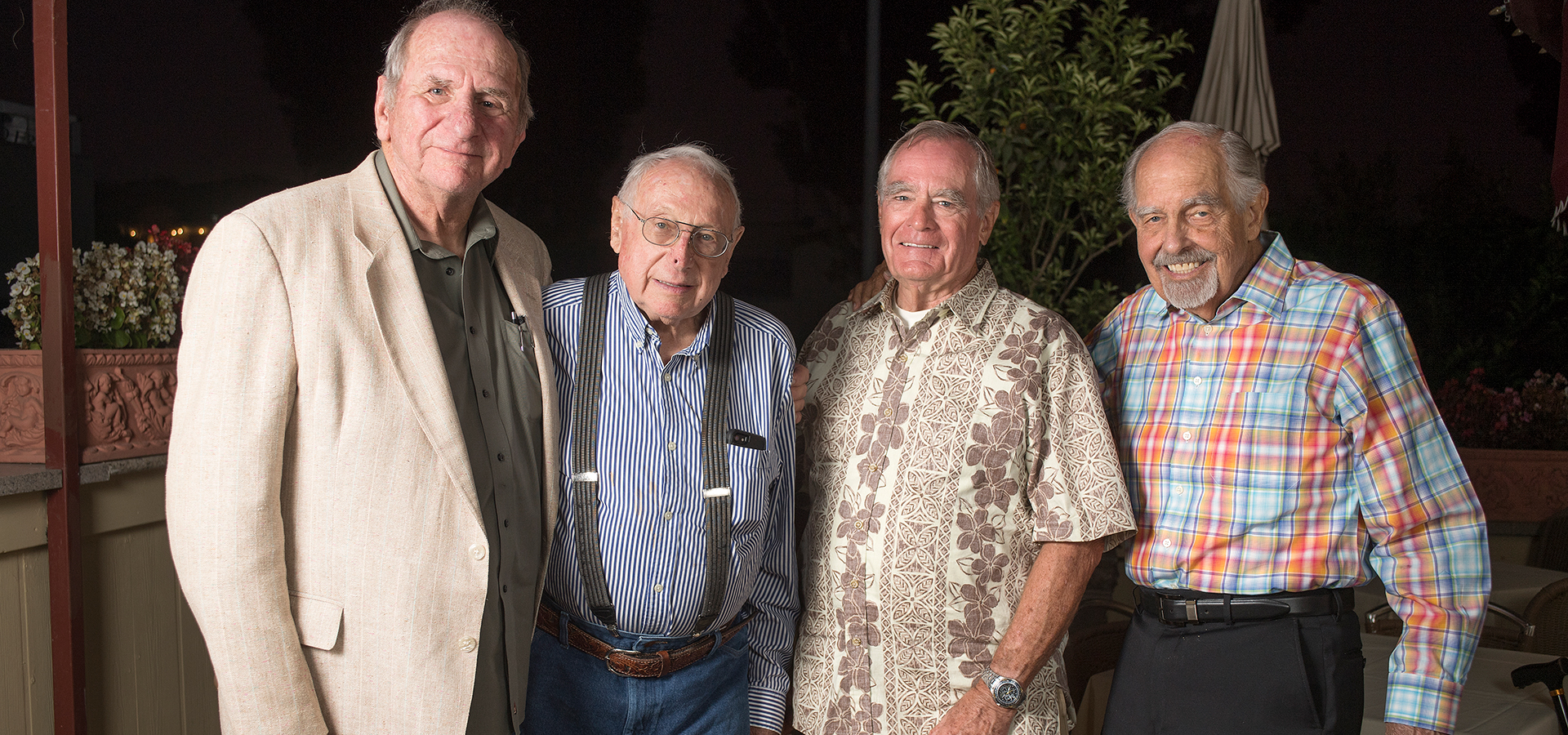It Takes a Rose Float Family
Building the New Rose Float Lab is a Community Effort
By Melissa McCoy
Like many community college transfer students at Cal Poly Pomona, Janetta McDowell was looking to connect quickly with her new university in a meaningful way.
She already had one on-campus family — McDowell was an elite track-and-field athlete — but she wanted to feel a part of the wider school community and meet students from different colleges. That’s when she decided to volunteer to help decorate the 1995 Rose Float, and to bring along her parents and brother so they’d feel a part of it too.
“I wanted to get involved my first quarter and it sounded like fun. I wasn’t even part of the club,” says McDowell (’97, liberal studies). “It was fun. And it really made me and my family feel very connected to Cal Poly Pomona.”
Little did McDowell know that she was about to gain yet another, much bigger, family — her Rose Float Family — and that the connection would lead her to serve as senior coordinator of Rose Float and, later, director of operations.
Since 1948, thousands of students like McDowell have enjoyed that same feeling of belonging as they worked toward a shared goal of launching yet another float down Colorado Boulevard on New Year’s Day, picking up invaluable skills along the way.
In addition to fun and friendship, there has always been a rich history of celebration. The all-volunteer floats, built in conjunction with Cal Poly SLO, have won 59 awards in the Rose Parade, pioneering the use of such features as hydraulics for animation (1968), the first to use computer-controlled animation (1978) and the introduction of fiber optics (1982).
Now the Rose Float family is celebrating another first: Construction has finally begun on a Rose Float Lab and Design Complex that is expected to be completed by early 2021.
It takes a big family to build the float annually, so it’s little wonder it took an even bigger one to raise the money for a lab that has loosely been in the works for well over 25 years.
The commitment and passion of hundreds of donors, as well as the campus community and the university, all contributed to the funding success of the first phase of this project, bringing in more than $4.7 million.
The biggest donors, Rose Float alumnus Butch Lindley (’67, agronomy) and his wife, Vivien, gave $1 million to the effort and asked that it be named for two Rose Float alumni — the late Don Miller (’52, horticulture), who got the Rose Float program started in 1948, and Ron Simons (’64, agronomy; ’69, food marketing and agribusiness management), who kept it going and ensured that it thrived.
“Donors on a variety of levels have come together to make this much-needed lab a reality. We are grateful for the unique dedication of our Rose Float family for meeting our challenge and championing this unique learning lab in support of our students,” says Krista Spangler, director of development for student affairs. “There is still much to be done to honor the history and legacy of this program and build the complex needed for future generations of students to innovate and collaborate.”
The Don Miller and Ron Simons Rose Float Lab, initially envisioned as having 5,700-square-feet of enclosed space, is now being expanded to 7,200-square-feet and will also include a kitchen, meeting room and additional shop space.
“Cal Poly Pomona has a host of programs and initiatives to create a one-of-a-kind learning experience for our students, but nothing quite defines our institutional legacy like the Rose Float program,” says University President Soraya M. Coley. “This new lab greatly enhances the program and ensures that our students will be carrying this tradition forward for decades to come. And the immense generosity making the lab a reality is a testament to the impact of this amazing program.”
After 71 years of creating award-winning floats with little protection from the elements, using largely out-of-date and donated equipment, CPP students, alumni, staff, faculty and community volunteers — a Rose Float family that spans generations — will soon be plying their craft in a lab that interim director Heather Hanson (’94, marketing management) says offers a clean slate, with new equipment and materials in line with what students will find in their current workplaces.
The fact that it also provides modern indoor comfort is not lost on Hanson, who has built her fair share of floats. “December nights in Pomona are not warm,” she says.
The complex will have greater visibility at Kellogg Drive and the 10 Freeway, and will provide more than 14,000-square-feet of indoor and outdoor work space, including a fully enclosed float construction bay, design workspace and a courtyard to host large numbers of volunteers.
A Labor of Love
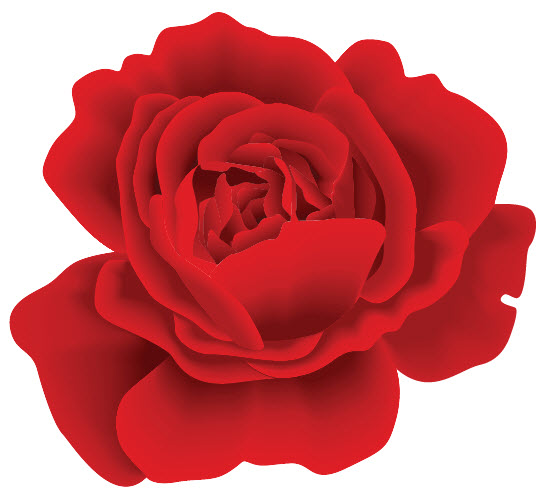 The original campus lab may be well loved, carrying decades of memories and the sweat and tears of many an undergrad, but the new lab and complex will offer protection from rain and the occasional mud torrent, and, as Hanson points out, security that will help ensure expensive and vital tools and electronics are kept safe.
The original campus lab may be well loved, carrying decades of memories and the sweat and tears of many an undergrad, but the new lab and complex will offer protection from rain and the occasional mud torrent, and, as Hanson points out, security that will help ensure expensive and vital tools and electronics are kept safe.
“The new lab is going to be a great place,” says Bill Jacobson (’61, animal husbandry), co-chairman of two early floats and a member of the rose float alumni chapter. “It’s a long, long time coming.”
In fact, it’s been coming since Don Miller of Pasadena, who believed that the Cal Polys (they were still one school back then) deserved a shot at entering a float, got his chance only 90 days before the 1949 parade, and with some student, faculty and staff help and $258 created the first Cal Poly float, winning the Award of Merit.
When “operations” moved from the university’s original Voorhis campus in San Dimas to the new campus (then known as the Kellogg campus in Pomona), cement was being poured for buildings, so the early students (Jacobson says it was five or six agricultural majors) simply asked the crew to pour some for them.
“The engineers got hornswoggled into doing some work too!” Ron Simons remembers.
Dale Wong (’78, engineering technology), director-at-large on the Rose Float alumni chapter and part of the steering committee, says that in the summer of 1979, there was still no cover for the float-building area and a lot of materials were being damaged.
“We needed to do something to get it covered,” he says. “A lot of the time we just worked out in the rain. If it was really bad, we towed the float down to the old ag engineering building and found some shelter to keep working. It was definitely a labor of love.”
Some students from electrical design, with the help of donations and a local cement company, enlarged the concrete pallet, Wong says.
“We would go for anything. Whatever it took, we’d go after it, including food,” Wong says, recounting a year when the team secured two landing gear from an F-4 Phantom jet for use as the wheels on their roller-skating elephant float.
Simons, who says the test-stand model gears were donated by a local Pomona manufacturing company, adds that Southern California businesses large and small always wanted to help, and still do.
Those unique college experiences (including “borrowing” flowers from neighbors’ gardens) have blossomed into lifelong friendships. Rose Floaters keep in touch, vacation together, and about 20 couples have married, with the occasional union between the two Cal Poly campuses.
Younger graduates add to the growing family, including Thomas Mutch (’16, mechanical engineering), who enjoys the multigenerational camaraderie.
“There’s a lot of us out there with knowledge, so we want to help the current students,” says Mutch, who was the animatronics and electronics lead student. “We don’t want to do it all for them, but we want to be there when they need us.”
The Rose Float Advantage
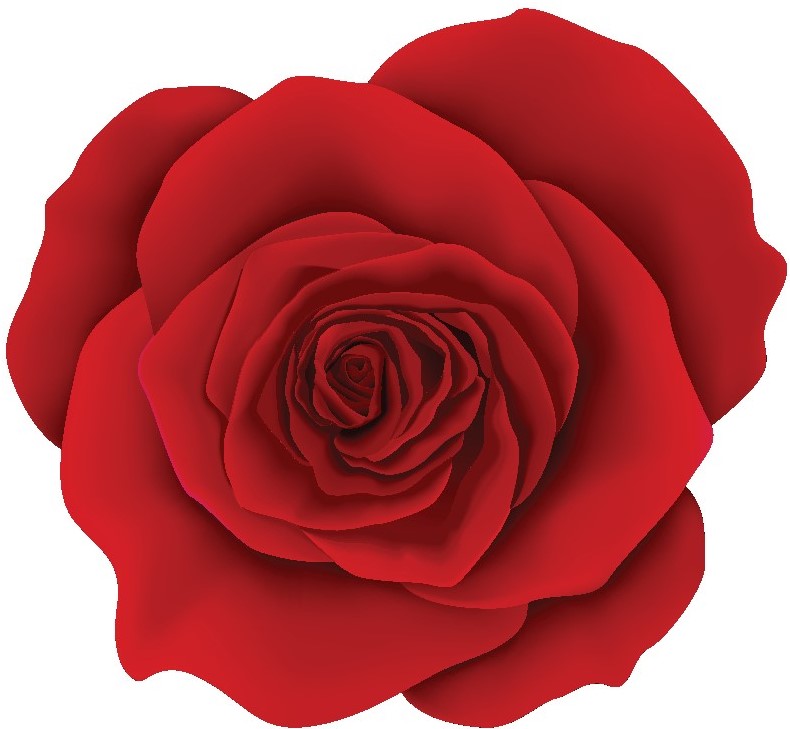 Rose Float has always been a prime example of the Cal Poly Pomona’s polytechnic approach — students learning from each other in a hands-on environment.
Rose Float has always been a prime example of the Cal Poly Pomona’s polytechnic approach — students learning from each other in a hands-on environment.
“The engineering student learns from the marketing student who learns from the designer,” Spangler says. “Everyone’s learning new skills, thinking from a different point of view and respecting the diversity of the team. Students are learning to communicate more effectively, manage and motivate teams, and solve complex problems.”
Many Rose Float alumni, including Mutch and Wong, say their hands-on float work directly transferred to technical tasks in their professional careers.
Mutch, the alumni chapter’s unofficial historian, parlayed his Rose Float experience to land his “dream job” with Artistic Entertainment Services, and he recently designed and animated props for “It’s a Small World” in Tokyo.
Alumni also learned to hone their communication skills. Matthew Yeseta (’08, electronics and computer engineering technology), the current Rose Float alumni president, says that working closely with non-technical volunteers and explaining issues to them has helped him grow as the president and in his work as an engineer for a satellite development center.
Hanson says Rose Float experience educates student volunteers in all facets of their professional careers.
“This work helps so much with management, budgeting, processes, practical experiences,” she says. And then there is the important social component.
“You can’t work on something of that scope and scale without having relationships. There’s a bond you get that you just don’t get from going to class.”
That may be why saying goodbye to the old shed will be tough for many of the veterans. Simons says he spent both his 18th and 70th birthdays at the lab, but he’s not sorry to see it replaced.
“We’ve been talking about a new lab for 30 years, and now the students are getting one,” Simons says. “They will be able to better spend their time coming up with new ideas and initiatives because they won’t be dealing with weather or equipment problems.”
McDowell served as director of Rose Float operations for four years and recently turned over her duties to Hanson, a former president of the Rose Float alumni chapter, and has become the university’s director of first-year and transition experiences. Even with the new job, she will remain involved.
“I love it,” McDowell says. “It’s a family.”
Through the Decades: Why the Rose Float Program Means So Much to Alumni
 Bill Jacobson
Bill Jacobson
’61, animal husbandry
Student volunteer, co-chair of Rose Float (’58 and ’59)
“The early guys, there were maybe five or six of us, were mostly ag students with some building experience. We’ve stayed very close all these years. When we’re together, it’s so much fun. Rose Float is the glue that’s kept us together and made us better people.”
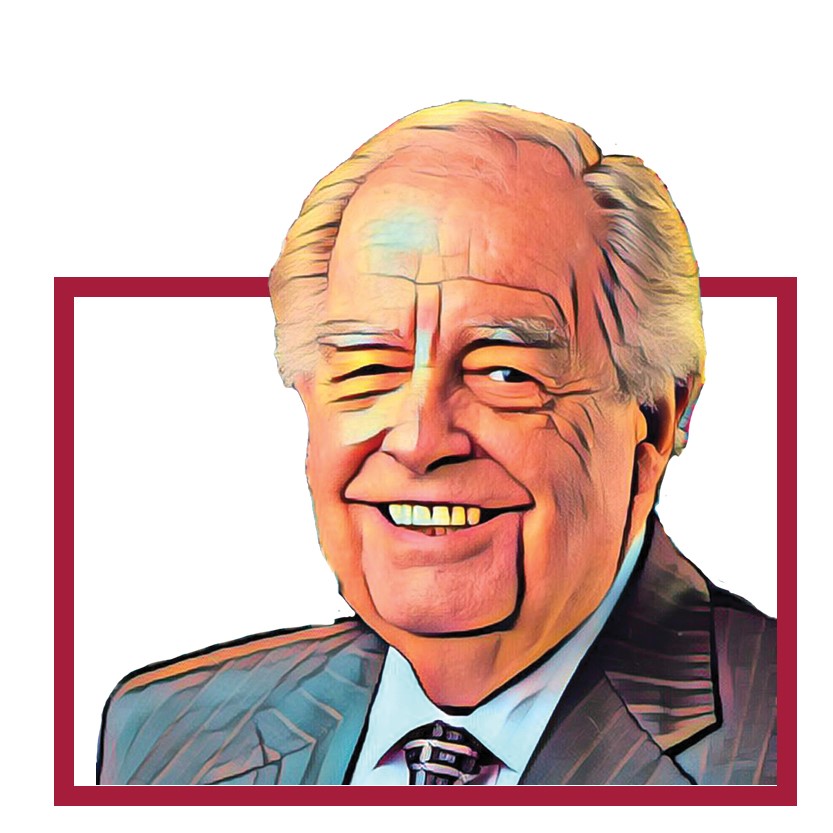 Ron “Mr. Cal Poly Pomona” Simons
Ron “Mr. Cal Poly Pomona” Simons
’64, agronomy; ’69, food marketing and agribusiness management; ’12, honorary doctorate
Played Man on the Moon (’62);
co-chair of Rose Float (’64, ’68); longtime Rose Float advisor
“Nobody is getting paid a dime and is giving it everything they’ve got. … Of course we worked right through break as students, we had to. I remember times when I took off from the float at 3 or 4 in the morning on Christmas, went home, collected my gifts and turned right back around. I loved it.”
 Dale Wong
Dale Wong
’77, engineering technology
Co-chair of Rose Float (’82); director of Rose Float alumni chapter; Rose Float Lab construction committee
“We all put so much into this over the years, and got so much from it. It’s our legacy to help the students coming up.”
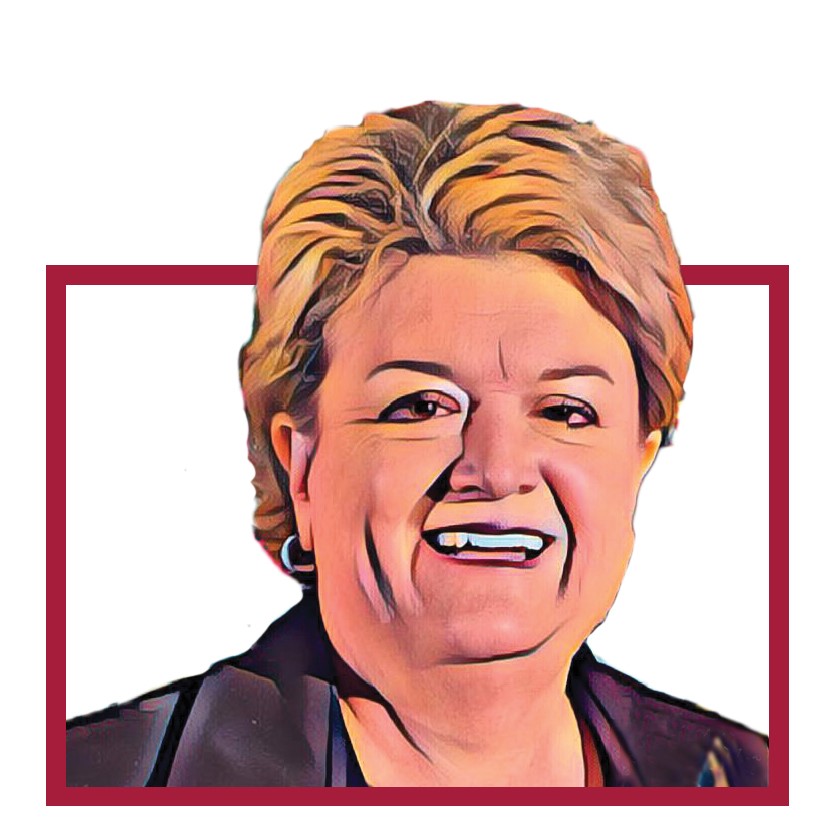 Michele Gendreau
Michele Gendreau
’83, hotel restaurant management
Co-chair of Rose Float (’83); Rose Float committee chair; board member, Rose Float alumni chapter
“You learned how to succeed and to fail without discrimination. You met long-standing friends and learned from each other. We all had a common goal, and it created a bond like no other. To be an alumna from this unique program is unlike many other things. … There are students out there today who also will be great leaders because of the experience. I like to associate with greatness, and think that this program brings that each and every year.”
 Janetta McDowell
Janetta McDowell
’97, liberal studies
Student volunteer; senior coordinator; director of Rose Float program (2015-19)
“When I was a student volunteer, I had an opportunity to network, to expand my abilities, my communication skills. There’s a lot of personal development when you work on the float. It can add so much to your wealth of experience here.”
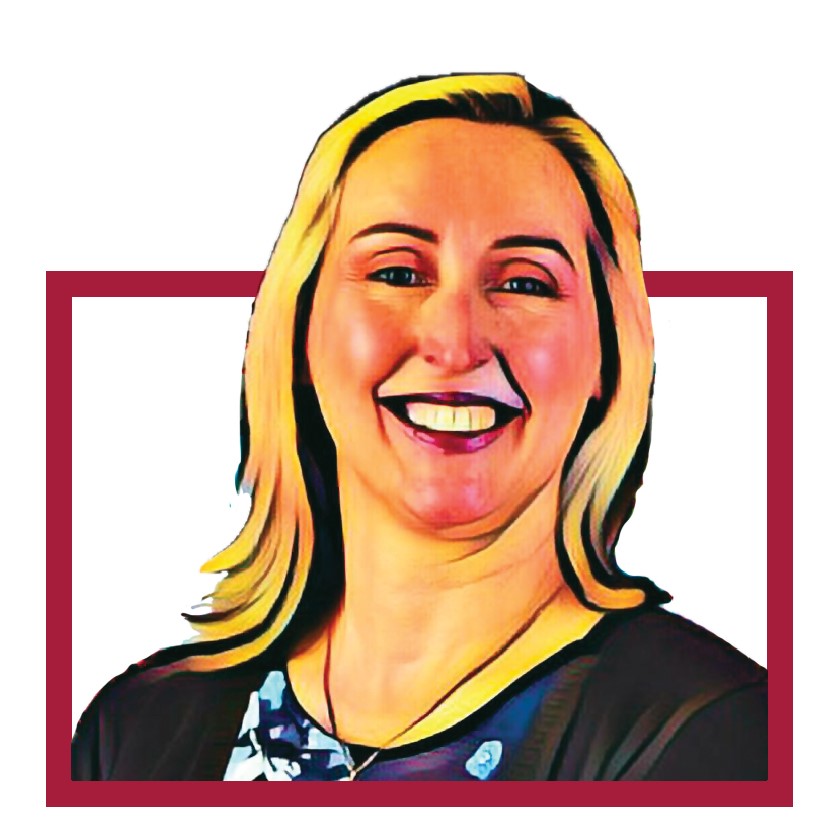 Heather Hanson
Heather Hanson
’94, marketing management
Student volunteer; Rose Float Alumni chapter president; interim director of Rose Float program (current)
“It’s very cool that I can come back for this. The reason folks are still involved is because they got so much out of the program. It really helped me personally. It’s such a unique experience, and we’re so fortunate to have such amazing alumni. It’s really about giving back.”
 Matthew Yeseta
Matthew Yeseta
’08, electronic and computer engineering technology
Co-chair of Rose Float (’08);
Rose Float Association president; Rose Float alumni president
“I really appreciate the friendships and the camaraderie that very few people ever get to experience. And you can see how alumni have used the program to grow and continue to grow. … It’s still very much a village to get it done every year. And getting it done has a lot to do with passion. Everyone makes the time to volunteer because they’re passionate about it. They carve out time to help.”
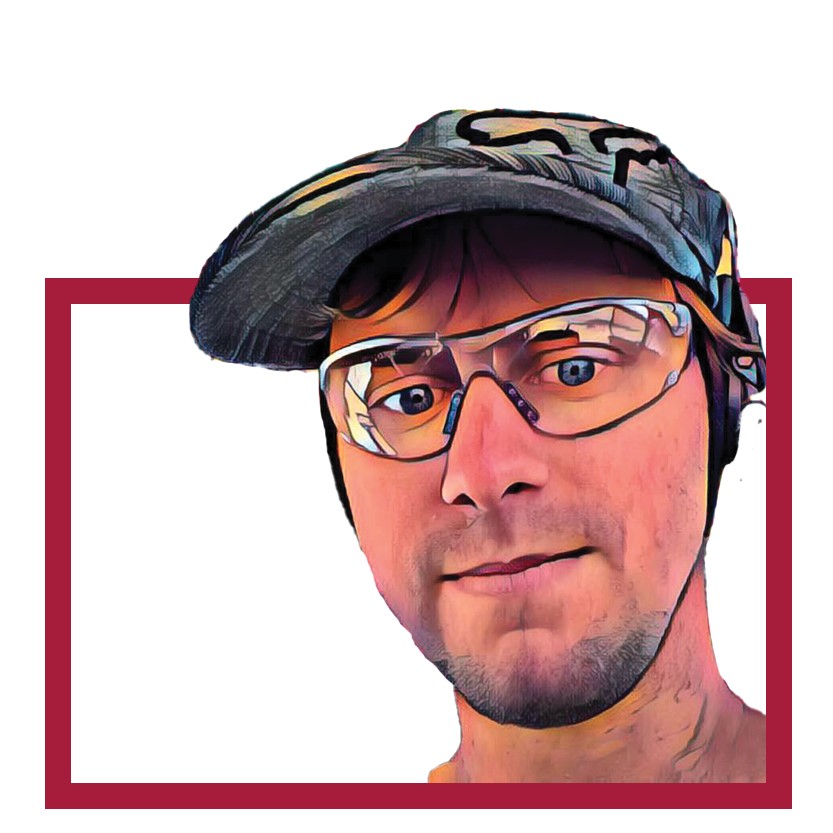 Thomas Mutch
Thomas Mutch
’16, mechanical engineering
Student volunteer; electronics and animation lead; unofficial Rose Float historian
“One of the things that I love about Rose Float is that it doesn’t matter if you don’t know how to do it, we’ll teach you. The first days I learned a bunch of skills. And then you just keep building on them.”
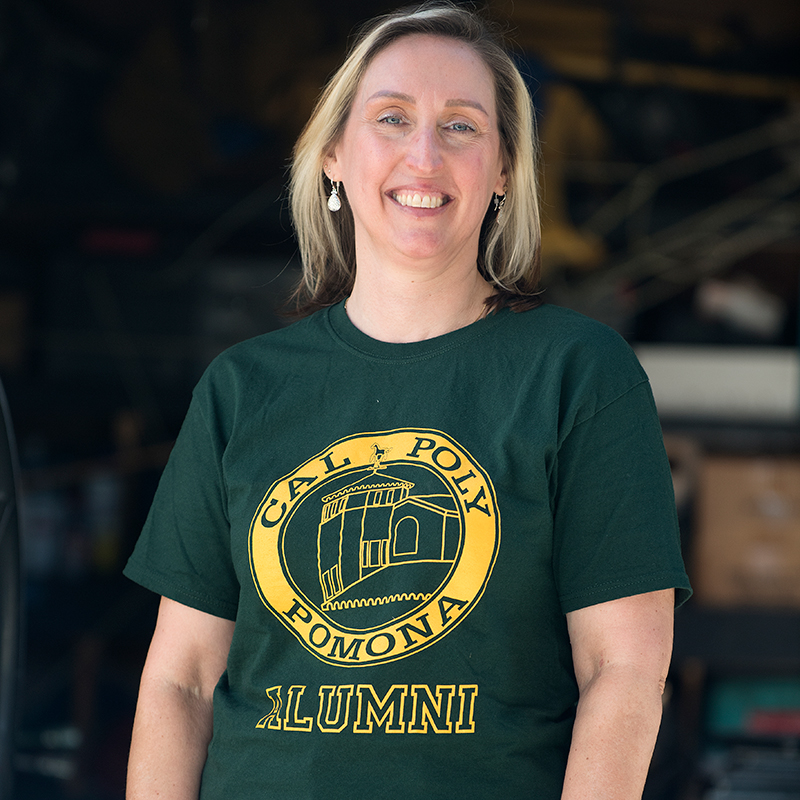
Rose Float Alumna at the Helm of Aquatic Aspirations
As a student involved in Rose Float, Heather Hanson balanced the books, procured much-needed materials and decorated the university’s latest parade entry. Even after she graduated and began a career in the corporate world, Hanson (’94, marketing management) continued to volunteer and served as president of the Rose Float Alumni Chapter from 2007 to 2018.
As the interim Rose Float director, Hanson will oversee the creation of the 2020 float, “Aquatic Aspirations.”
“I know it’s going to be a lot of work, but it’s also going to be a lot of fun,” Hanson says. “Students who have come through the program are sharp and smart. They want to learn. I’m looking forward to the opportunity to mentor them and share what
I’ve learned in my 20-plus years of experience in the business world. I am happy to help and give back.”
She also learned some important skills from Rose Float that she has applied during her career as a supply chain and operations executive for e-commerce companies – how to run a business, how to work with people and resolve issues on the job, and how to get things done with a tight deadline and budget.
“I managed the Rose Float budget and worked directly with suppliers for two years,” she says. “It was a tremendous learning experience. You can’t get that kind of practical experience just going to school.”
- Melanie Johnson
Building The New Rose Float Lab
An additional $800,000 is needed for equipment, storage enhancements and an endowment to support future program needs.
Naming opportunities are available as an expression of gratitude for those who wish to establish their legacy through a major gift (including cash, pledges, securities, planned giving) that will directly support the construction of the complex and benefit future generations of Rose Float students.
Opportunities range from $25,000 to $150,000. Some have already been reserved by foundations and alumni, including The Ahmanson Foundation, Tournament of Roses, Rob (’81, business administration) and Karen Kobus (’80, accounting), Don Huntley (’60, animal science) and Tom Wolfe (’66, animal science).
Support the Rose Float Lab and Design Complex
Krista Spangler
909-869-4450
klspangler@cpp.edu
www.cpp.edu/rosefloatlab
